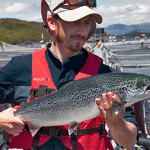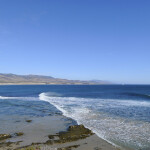Sam Grimley has served as the executive director of environmental nonprofit Sea Pact since 2022. Alexandra Golub is the sustainability manager at New York City-headquartered Acme Smoked Fish.
In June, the U.S. Supreme Court ruled in favor of New England herring harvesters who believed they were unfairly forced to bear the financial burden of independent at-sea monitors hired to observe their fishing operations.
NOAA’s National Marine Fisheries Service (NMFS) established that vessel owners must pay the salaries – up to USD 700 per day (EUR 640) – of the mandatory federal observers “carried” onboard to enforce fisheries management regulation and prevent overfishing.
Under the recent ruling, the court overturned a longstanding legal precedent known as the Chevron deference, which had enabled regulatory agencies broad interpretation of congressional statutes, permitting these agencies, such as NMFS, latitude in establishing and implementing regulations without direct lawmaker oversight. Reactions to the sweeping court decision have been mixed, but the seafood industry shouldn't let this shift in process derail its own efforts to improve monitoring and compliance in fisheries.
Many seafood harvesters and other fishing industry stakeholders applauded the court's ruling. Small-scale, independent harvesters’ revenues often fluctuate significantly, given dynamics of the market, shifting ex-vessel prices, landings, and other internal and external costs. Requiring harvesters to pay an additional USD 700 per day out of pocket for at-sea monitors is a significant burden that can impact margins for small-scale fishers and threaten the economic viability of their operations.
At the same time, conservationists and other stakeholders have decried the recent decision. Independent monitoring and regulatory compliance are core pillars of responsible fisheries management that provide transparency and critical data, which can inform fishery management decisions and contribute to the long-term sustainability and health of a fishery.
What we at Sea Pact believe, and what we hope does not get lost amid the reactions to this ruling, is the importance of the issue underlying the regulation in the first place: It is imperative for the United States to have well-managed fisheries in order to sustain coastal economies, contribute to better domestic food security, and to support the ecological health and biodiversity of our unique waters.
At-sea monitoring and compliance are absolutely critical to sustainable fisheries management as reflected in respected regulatory frameworks, sustainability certification standards, and academic research. Implementing these efforts must be conducted in an effective and cost-efficient manner without the burden being placed solely on harvesters.
Electronic monitoring (EM) provides an opportunity to do just that. EM refers to the use of electronic technologies, such as cameras, sensors, and GPS tracking, to monitor fishing activities and enforce regulations while potentially replacing costly monitoring methods such as onboard observers.
EM solutions have been around for over a decade, with significant advances made in recent years, but more effort is needed to scale the technologies. EM is not as simple as putting a camera on a vessel and pressing the record button. The data captured needs to be assessed and analyzed and used to inform management decisions whenever possible, thus creating a constant feedback loop for harvesters and regulators. Importantly, there is not yet a one-size-fits-all solution, as the technology needs to be calibrated to serve each individual fishery, vessel, and gear type. Machine learning and AI may address some of these issues, but more pilots and trials are needed to accelerate widespread adoption.
To date, many EM efforts in the U.S. have been led by harvesters, regulators, and researchers, but there is an opportunity for the broader seafood industry to collaborate on and support EM efforts to ensure harvesters can pilot these technologies without bearing the full cost burden of adoption.
One example of such an effort is a recent Sea Pact-funded project to develop and access EM technology to support the long-term sustainability of a Gulf of Mexico commercial multispecies reef fish fishery led by Mote Marine Laboratory. Outside of the U.S., Seafood Fisheries and Emerging Technologies convenes technologists, fishery stakeholders, and regulators to utilize technology, including EM, to address major challenges in seafood and fisheries. These are just two examples of Sea Pact-supported efforts since 2022, but there are numerous others beyond Sea Pact’s purview.
Though the Supreme Court’s decision directly impacts domestic fisheries policy, the seafood industry extends globally and connects us all. More industry support for cost-efficient, as well as effective, monitoring and compliance is needed to ensure the long-term viability of fisheries and the livelihoods of the harvesters that the entire sector relies on.
Opportunities for industry to advance EM adoption include joining pre-competitive collaborations focused on sustainability initiatives, engaging supply chain partners and harvesters in EM efforts including pilots, and communicating successes and lessons learned from these efforts.
With or without Chevron deference, our fisheries and fishing communities need innovative and cost-effective solutions to steward a more resilient future.







